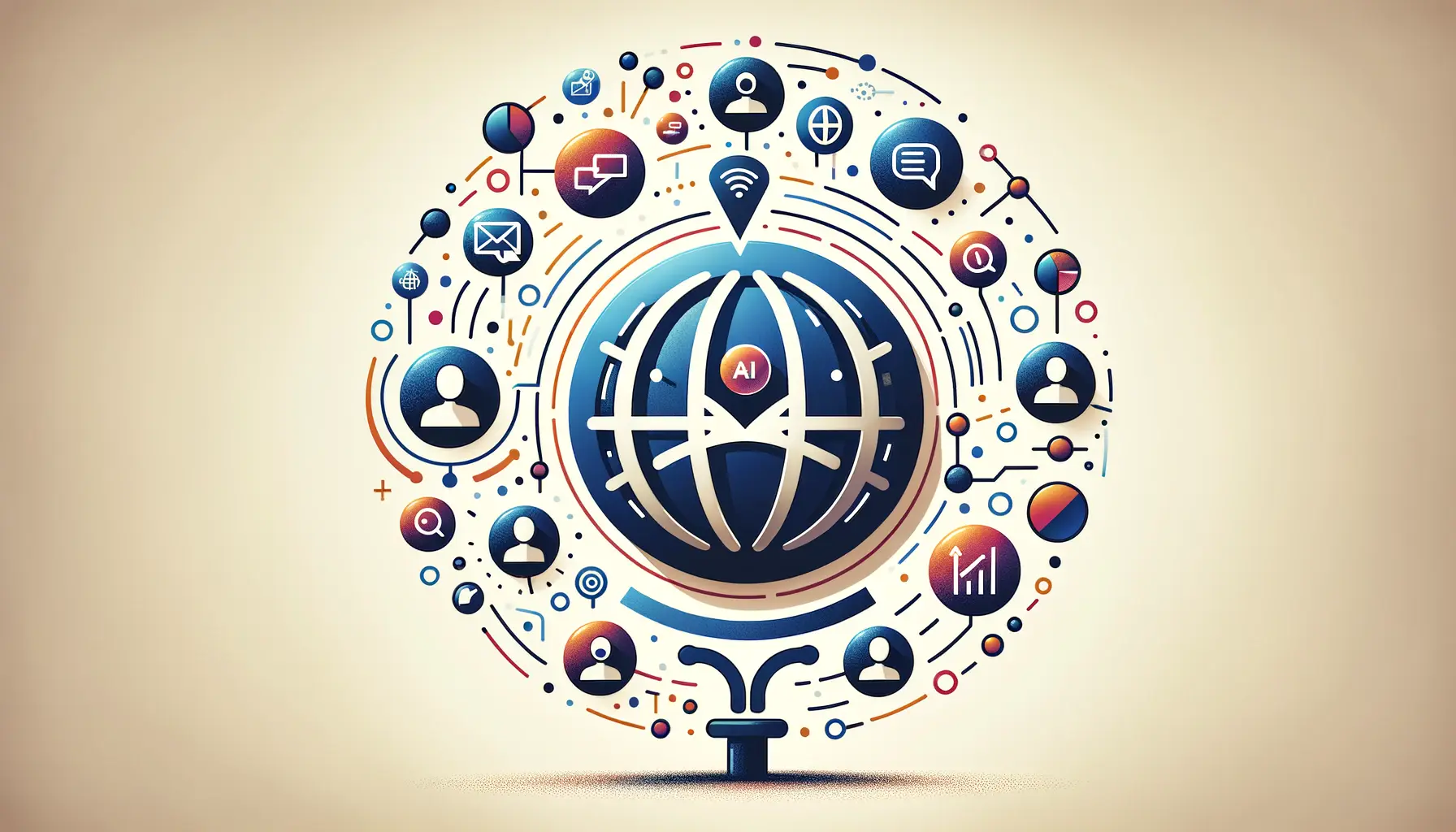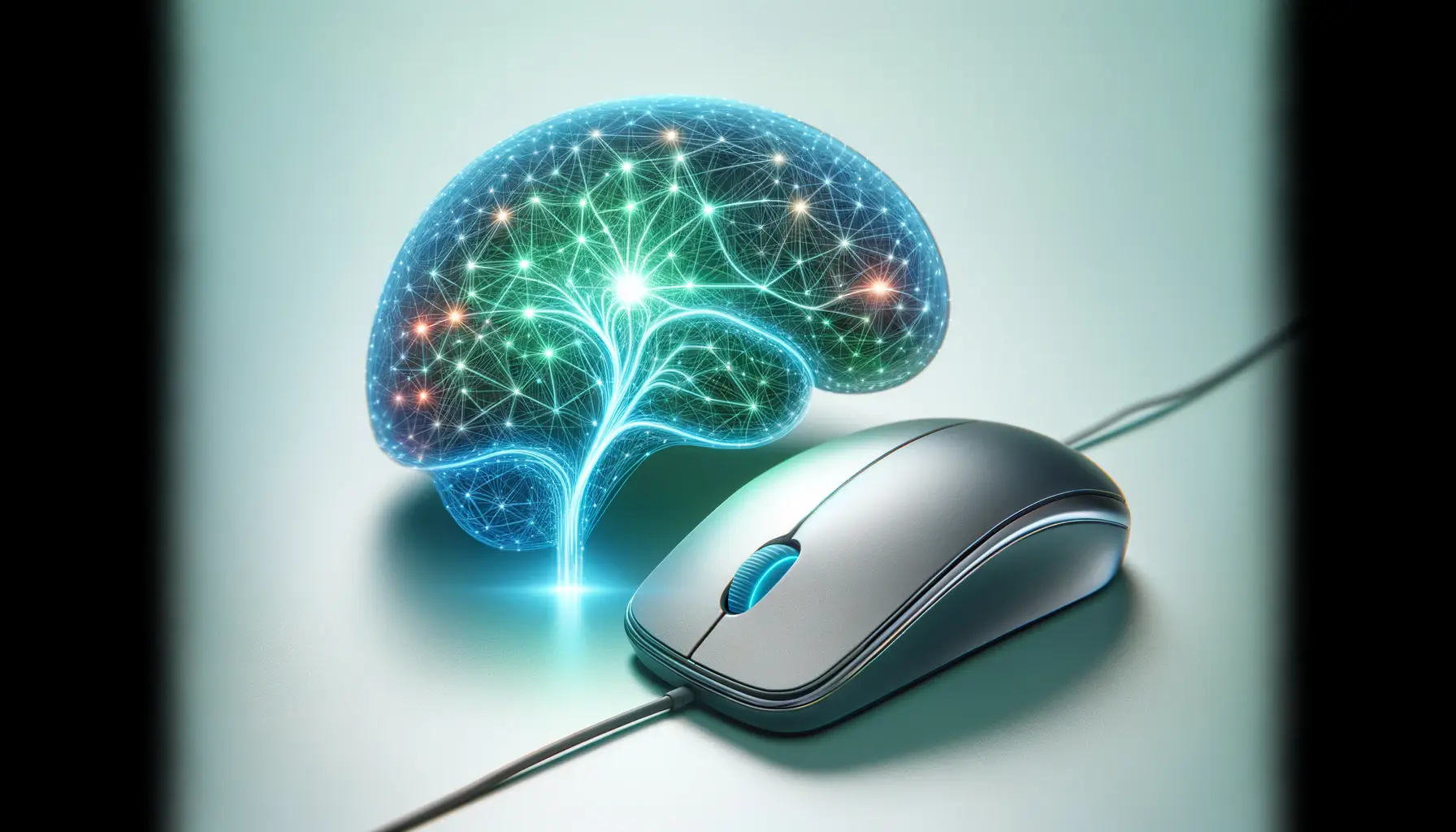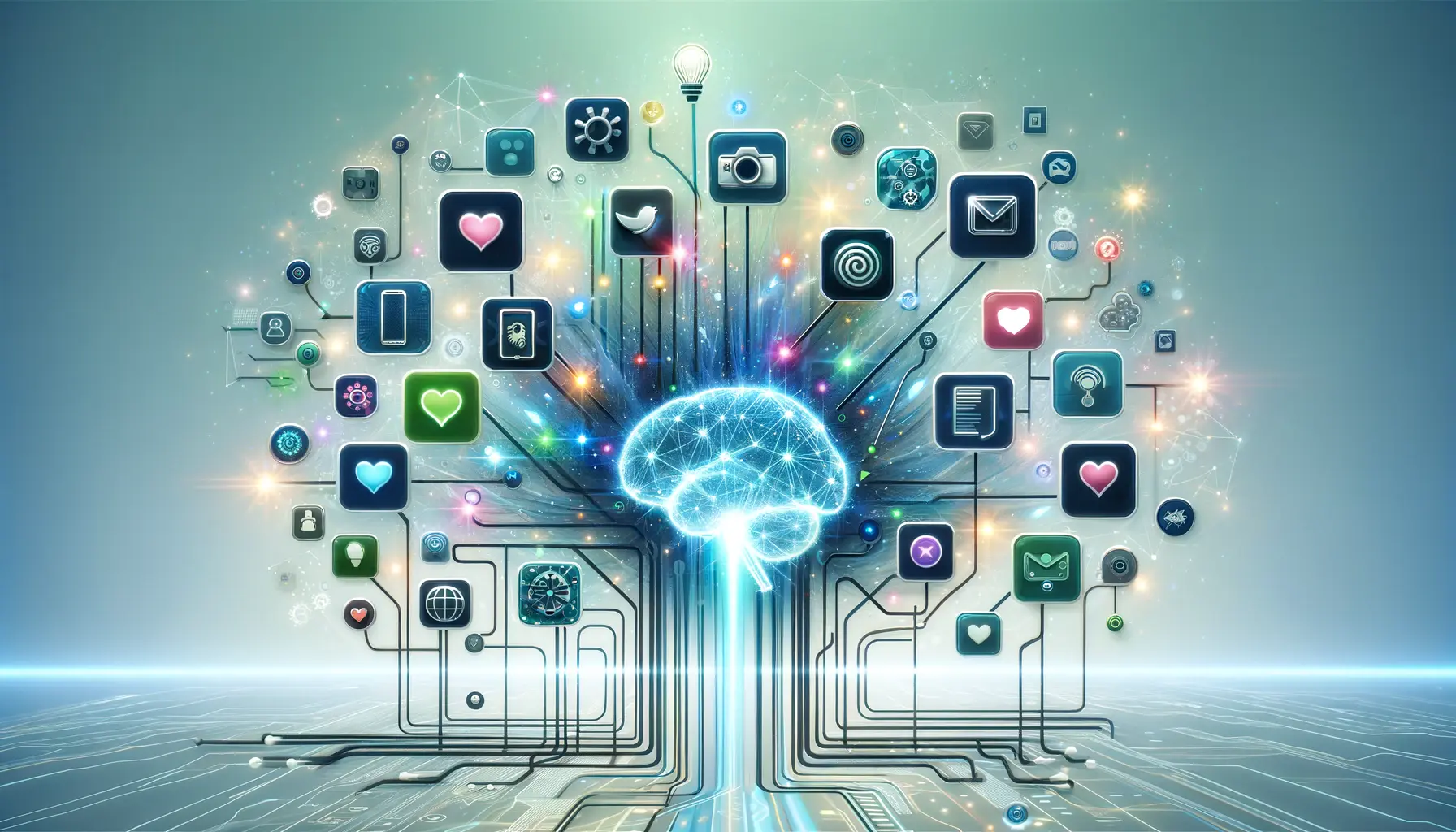The integration of Artificial Intelligence (AI) into the nonprofit sector marks a transformative era, offering unprecedented opportunities for organizations to amplify their outreach and impact.
As nonprofits continually seek innovative ways to engage with their communities and stakeholders, AI emerges as a powerful ally, reshaping the landscape of philanthropy and social engagement.
This article delves into the multifaceted role of AI in enhancing nonprofit outreach, spotlighting its potential to revolutionize how these organizations connect, communicate, and catalyze change.
At the heart of this technological revolution is the concept of ‘Grok AI’, a term inspired by the sci-fi lexicon to denote deep, intuitive understanding.
For nonprofits, Grok AI signifies the adoption of intelligent systems that not only automate tasks but also unearth insights from data, enabling personalized interactions and strategic decision-making.
This paradigm shift towards data-driven, empathetic engagement with donors, volunteers, and beneficiaries underscores a new chapter in nonprofit outreach, where technology and human-centric approaches converge for greater good.
- Understanding AI’s Role in Nonprofit Outreach
- Streamlining Event Management and Volunteer Coordination
- AI-Driven Analytics for Impact Measurement
- Enhancing Security and Donor Privacy with AI
- Building Stronger Communities with AI-Enhanced Outreach
- Future Trends: AI’s Evolving Role in Nonprofits
- Empowering Nonprofit Leadership with AI Insights
- Conclusion: Unleashing the Potential of AI for Nonprofits
- Grok AI for Nonprofits: Enhancing Outreach FAQ
Understanding AI’s Role in Nonprofit Outreach
The Power of Personalized Communication
One of the most significant advantages AI offers to nonprofits is the ability to personalize communication at scale.
By analyzing donor data, AI algorithms can identify patterns and preferences, enabling organizations to tailor their messages to resonate with individual supporters.
This personalized approach not only enhances donor engagement but also fosters a deeper connection between the nonprofit and its community, leading to increased support and loyalty.
Moreover, AI-driven tools like chatbots and virtual assistants can provide immediate, 24/7 support to inquiries, further enhancing the donor experience.
These intelligent systems can handle a wide range of tasks, from answering frequently asked questions to guiding users through the donation process, ensuring that every interaction is meaningful and impactful.
Optimizing Fundraising Strategies
AI’s predictive analytics capabilities are a game-changer for nonprofit fundraising.
By leveraging data on past donations, engagement patterns, and external factors, AI models can forecast future giving trends, identify potential major donors, and suggest optimal times for fundraising campaigns.
This insight allows nonprofits to allocate their resources more effectively, ensuring that their fundraising efforts are both strategic and successful.
Furthermore, AI can automate the segmentation of donors based on their giving history, preferences, and behavior.
This segmentation enables nonprofits to implement targeted fundraising campaigns that are more likely to resonate with different donor groups, maximizing the chances of success.
Through these sophisticated AI applications, nonprofits can not only increase their fundraising efficiency but also ensure that their campaigns are more aligned with their supporters’ interests and capacities.
AI’s role in nonprofit outreach extends beyond mere automation, offering deep insights and personalization that can significantly enhance donor engagement and fundraising strategies.
Streamlining Event Management and Volunteer Coordination
The logistical challenges of organizing events and managing volunteers are well-known pain points for many nonprofits.
AI technology offers a robust solution to these challenges, streamlining event management and volunteer coordination through automation and intelligent scheduling.
By harnessing the power of AI, nonprofits can ensure that their events run smoothly and that volunteers are effectively engaged, enhancing the overall impact of their programs.
AI-driven platforms can automate the entire event planning process, from sending out invitations and tracking RSVPs to managing event logistics.
These systems can analyze previous events to suggest the best dates, times, and formats for future gatherings, ensuring higher attendance and engagement.
Additionally, AI can optimize volunteer schedules, matching volunteers’ skills and preferences with the most suitable tasks and shifts.
This not only improves the volunteer experience but also maximizes the contribution of each individual to the nonprofit’s goals.
Enhancing Donor Research and Prospect Identification
- AI tools excel in sifting through vast amounts of data to identify potential donors and key influencers who could champion the nonprofit’s cause. By analyzing social media, public records, and other data sources, AI can uncover hidden networks and relationships, offering a roadmap for outreach and engagement strategies.
- Moreover, AI’s predictive modeling can assess the likelihood of support from various prospects, prioritizing outreach efforts towards those most likely to contribute. This targeted approach not only increases the efficiency of fundraising campaigns but also ensures that efforts are focused where they can yield the highest returns.
Improving Content Strategy with AI Insights
- Content is king in the digital age, and AI can play a pivotal role in crafting compelling narratives that resonate with a nonprofit’s audience. By analyzing engagement data, AI can identify topics and formats that capture the interest of supporters, guiding the content creation process.
- AI-powered content generation tools can also assist in producing articles, social media posts, and marketing materials, ensuring that the nonprofit’s messaging is both consistent and impactful. This not only saves time but also allows nonprofits to maintain a strong online presence, crucial for outreach and engagement.
Incorporating AI into event management and volunteer coordination can significantly reduce the administrative burden on nonprofits, allowing them to focus more on their mission and less on logistical complexities.
AI-Driven Analytics for Impact Measurement
Measuring the impact of their programs is crucial for nonprofits to demonstrate effectiveness, secure funding, and refine their strategies.
AI-driven analytics offer a sophisticated approach to impact measurement, enabling organizations to quantify their success in tangible terms.
By leveraging AI, nonprofits can gain deeper insights into the outcomes of their initiatives, ensuring that they not only meet but exceed their goals.
Through the collection and analysis of data from various sources, AI tools can track key performance indicators (KPIs) and outcomes related to specific programs or interventions.
This data-driven approach allows nonprofits to identify what works, what doesn’t, and why, facilitating continuous improvement and innovation in their service delivery.
Customizing Donor Experiences with AI
- AI technology enables nonprofits to create highly customized experiences for their donors, fostering stronger relationships and increased loyalty. By analyzing individual donor data, AI can help tailor communication, recognition, and engagement strategies to match the unique preferences and interests of each supporter.
- From personalized email campaigns to customized event invitations and targeted social media content, AI ensures that every interaction with a donor is relevant and meaningful. This level of personalization not only enhances the donor experience but also encourages ongoing support and advocacy for the nonprofit’s cause.
Leveraging AI for Operational Efficiency
- Nonprofits often operate with limited resources, making operational efficiency a top priority. AI can automate routine tasks, such as data entry, donor record management, and financial reporting, freeing up staff to focus on strategic initiatives and direct service delivery.
- Furthermore, AI can optimize internal processes, from budget allocation to resource management, ensuring that nonprofits can do more with less. By reducing overhead and increasing productivity, AI allows nonprofits to allocate a greater portion of their resources directly to their mission-related activities.
Adopting AI-driven analytics for impact measurement not only enhances a nonprofit’s accountability but also strengthens its case for support, attracting more donors and partners to its cause.
Enhancing Security and Donor Privacy with AI
In the digital age, data security and donor privacy are paramount concerns for nonprofits.
AI technologies offer advanced solutions to protect sensitive information and ensure compliance with data protection regulations.
By implementing AI-driven security systems, nonprofits can safeguard their data against cyber threats and breaches, maintaining the trust of their donors and stakeholders.
AI systems can monitor network traffic for suspicious activities, detect phishing attempts, and identify potential vulnerabilities in real-time.
This proactive approach to cybersecurity minimizes the risk of data breaches, ensuring that donor information remains confidential and secure.
Additionally, AI can automate compliance checks, helping nonprofits adhere to evolving data protection laws and standards without extensive manual oversight.
Optimizing Resource Allocation with AI
- Resource allocation is a critical aspect of nonprofit management, directly impacting the organization’s ability to fulfill its mission. AI can analyze financial and operational data to identify areas where resources can be optimized, ensuring that every dollar is spent effectively.
- From reducing unnecessary expenses to prioritizing investments in high-impact programs, AI-driven insights help nonprofits make informed decisions about where to allocate their funds. This strategic approach to resource management enables nonprofits to maximize their impact, even with limited budgets.
AI in Nonprofit Marketing and Awareness Campaigns
- Nonprofits rely on marketing and awareness campaigns to attract donors, volunteers, and support for their causes. AI can enhance these efforts by analyzing engagement data and optimizing campaign strategies for better reach and impact.
- Whether through targeted advertising, content personalization, or social media optimization, AI tools can help nonprofits connect with their audience more effectively. By leveraging AI to refine their marketing strategies, nonprofits can increase their visibility, engage with broader audiences, and drive more support for their initiatives.
AI’s role in enhancing security and donor privacy is a testament to its potential to not only advance nonprofit goals but also to protect the very foundation of trust and integrity upon which these organizations are built.
Building Stronger Communities with AI-Enhanced Outreach
Nonprofits play a crucial role in building and strengthening communities, whether through direct service provision, advocacy, or education.
AI has the potential to significantly enhance these outreach efforts, enabling organizations to connect with community members in more meaningful and impactful ways.
By leveraging AI to analyze community needs, preferences, and feedback, nonprofits can tailor their programs and services to better meet the demands of those they serve.
Furthermore, AI can facilitate the creation of virtual communities, bringing together individuals from diverse backgrounds to support a common cause.
Through forums, social media platforms, and other online spaces powered by AI, nonprofits can foster a sense of belonging and collective action among their supporters, regardless of their physical location.
Driving Innovation in Nonprofit Services
- AI is not just a tool for optimization and efficiency; it’s also a catalyst for innovation in the services nonprofits provide. From developing new educational tools and resources to creating more effective health interventions, AI can help nonprofits pioneer novel solutions to the challenges facing their communities.
- By analyzing data on service outcomes and user feedback, AI can identify opportunities for improvement and innovation, guiding nonprofits in the development of programs that are both effective and responsive to community needs.
Facilitating Collaborative Partnerships
- Collaboration is key to amplifying the impact of nonprofit work, and AI can play a significant role in facilitating partnerships between organizations, governments, and the private sector. By analyzing data on organizational strengths, needs, and goals, AI can identify potential partners with complementary capabilities, fostering collaborations that leverage the unique assets of each entity.
- These AI-enhanced partnerships can lead to more comprehensive and effective solutions to complex social issues, demonstrating the power of collective action in driving positive change.
The integration of AI into nonprofit outreach and service provision not only enhances the efficiency and effectiveness of these efforts but also opens up new avenues for innovation and collaboration, strengthening the fabric of communities around the globe.
Future Trends: AI’s Evolving Role in Nonprofits
The landscape of nonprofit technology is continually evolving, with AI at the forefront of this transformation.
As we look to the future, several trends are emerging that highlight the expanding role of AI in the nonprofit sector.
These developments promise to further revolutionize how organizations operate, engage with their communities, and achieve their missions.
Embracing these trends will be crucial for nonprofits seeking to leverage technology for social good.
One significant trend is the democratization of AI technology, making it more accessible to nonprofits of all sizes and budgets.
Advances in cloud computing and AI-as-a-Service (AIaaS) platforms are lowering the barriers to entry, enabling smaller organizations to harness powerful AI tools without the need for extensive resources or expertise.
This increased accessibility will allow more nonprofits to benefit from AI’s capabilities, from data analysis to personalized outreach and beyond.
AI Ethics and Responsible Use
- As AI becomes more integrated into nonprofit operations, the importance of ethical considerations and responsible use of technology comes into sharper focus. Nonprofits will need to navigate the challenges of bias, privacy, and transparency, ensuring that AI is used in a way that aligns with their values and the interests of their communities.
- Developing and adhering to ethical guidelines for AI use will be critical, as will engaging in ongoing dialogue with stakeholders about the role of technology in nonprofit work. This commitment to ethical AI will help build trust and ensure that the benefits of technology are realized equitably.
Enhanced Data Security Measures
- With the increasing reliance on digital technologies, data security will remain a top priority for nonprofits. AI can offer advanced solutions for protecting sensitive information and ensuring compliance with data protection regulations. However, organizations will need to stay vigilant, continuously updating their security practices to address emerging threats.
- Investing in AI-driven security tools and training staff on cybersecurity best practices will be essential for safeguarding donor data and maintaining the integrity of nonprofit operations.
The future of AI in the nonprofit sector is bright, with emerging trends pointing towards greater accessibility, ethical use, and enhanced security. By staying informed and adaptable, nonprofits can harness the full potential of AI to drive social impact and innovation.
Empowering Nonprofit Leadership with AI Insights
As nonprofit organizations navigate an increasingly complex world, the need for strategic leadership has never been more critical.
AI offers a unique set of tools to empower nonprofit leaders with insights that can drive more informed decision-making and strategic planning.
By harnessing the power of AI, leaders can gain a deeper understanding of their operational landscape, predict future trends, and make decisions that align with their mission and goals.
AI-driven analytics can provide a comprehensive view of an organization’s performance, from fundraising efficiency to program impact.
This level of insight enables leaders to identify strengths, pinpoint areas for improvement, and allocate resources more effectively.
Moreover, AI can help leaders anticipate challenges and opportunities, allowing for proactive rather than reactive strategies.
Enhancing Stakeholder Engagement
- Stakeholder engagement is crucial for nonprofit success, and AI can play a significant role in optimizing these efforts. By analyzing stakeholder data, AI can help identify the most effective channels and messages for engaging different groups, from donors and volunteers to beneficiaries and community partners.
- This targeted approach not only improves the quality of engagement but also strengthens relationships with key stakeholders, fostering a sense of community and shared purpose around the nonprofit’s mission.
Supporting Sustainable Growth
- For nonprofits, sustainable growth is about expanding their impact without compromising their values or mission. AI can support this goal by identifying opportunities for scalable programs, optimizing fundraising strategies, and streamlining operations.
- By leveraging AI to maximize efficiency and effectiveness, nonprofit leaders can ensure that their organizations grow in a way that is both sustainable and aligned with their core objectives. This strategic use of AI can help nonprofits extend their reach, deepen their impact, and achieve their vision for a better world.
It’s a misconception that AI is only for tech-savvy organizations. With the democratization of AI technology, nonprofits of all sizes and missions can leverage AI insights to empower their leadership and drive strategic success.
Conclusion: Unleashing the Potential of AI for Nonprofits
The integration of Grok AI into the nonprofit sector heralds a new era of enhanced outreach and operational efficiency.
As we have explored, the application of AI in nonprofits is not just about automating routine tasks; it’s about leveraging technology to deepen connections, optimize resources, and drive meaningful impact.
From personalized donor communications to strategic resource allocation and beyond, AI offers a suite of tools that can transform how nonprofits engage with their communities and achieve their missions.
Key Takeaways for Nonprofits Embracing AI
- Personalized Engagement: AI enables nonprofits to tailor their communication and engagement strategies, ensuring that every interaction resonates with the individual preferences and interests of their supporters.
- Strategic Decision-Making: By providing actionable insights and predictive analytics, AI empowers nonprofit leaders to make informed decisions that align with their strategic goals and mission.
- Operational Efficiency: Automating routine tasks and optimizing internal processes allows nonprofits to focus their resources on mission-critical activities, enhancing their impact and reach.
- Security and Compliance: AI-driven security tools offer advanced solutions for protecting sensitive data and ensuring compliance with data protection regulations, maintaining the trust of donors and stakeholders.
Embracing the Future with AI
As the nonprofit sector continues to evolve, the role of AI will undoubtedly expand, offering new opportunities for innovation and growth.
Nonprofits that embrace AI technology can look forward to not only achieving their current objectives more effectively but also unlocking new avenues for impact that were previously unimaginable.
The future of nonprofits and AI is ripe with potential, promising a world where technology and human compassion converge to create lasting social change.
In conclusion, the journey of integrating Grok AI into nonprofit operations is an ongoing process of learning, adaptation, and innovation.
By staying informed about the latest developments in AI technology and remaining committed to ethical and responsible use, nonprofits can harness the power of AI to not only enhance their outreach but also to forge a path toward a more equitable and sustainable future for all.
Grok AI for Nonprofits: Enhancing Outreach FAQ
Explore frequently asked questions about leveraging Grok AI in the nonprofit sector to enhance outreach and operational efficiency.
Grok AI refers to advanced AI technologies designed to intuitively understand and automate complex tasks, significantly benefiting nonprofits by enhancing efficiency and personalizing outreach.
By analyzing donor data, Grok AI identifies patterns and preferences, enabling nonprofits to tailor messages and engagement strategies to individual supporter interests.
Yes, Grok AI automates event planning tasks, optimizes volunteer scheduling, and provides insights for better event formats and timings, streamlining management processes.
Grok AI employs predictive analytics to forecast giving trends, identify potential donors, and optimize fundraising campaigns for maximum impact and efficiency.
Grok AI implements advanced security measures to monitor and protect sensitive data, ensuring donor privacy and compliance with data protection regulations.
Yes, Grok AI analyzes program data to track performance indicators and outcomes, offering nonprofits insights into their impact and areas for improvement.
Nonprofits can begin by identifying areas where AI can add value, such as donor management or program analytics, and then explore AI tools tailored to those needs.
Nonprofits should stay informed about the democratization of AI, ethical AI use, and advancements in AI-driven security to leverage technology responsibly and effectively.










